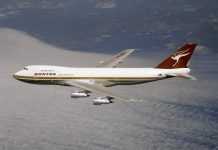List of Regional Blocs in North America, Their Mandates, and Headquarters
North America is a continent dominated by the United States of America. Canada and Mexico follow as the powerhouses in the region.
As such most of the regional trade blocs and agreements were initiated and largely sustained by these major powers.
The following are the regional blocs in North America;
1. North American Free Trade Agreement (NAFTA)
-
- The North American Free Trade Agreement is a trilateral agreement between the following countries;
-
-
- Canada
- United States of America
- Mexico
-
-
- NAFTA was formed to create a free trade zone between the U.S., Canada, and Mexico.
- This was to lower the cost of doing business in Mexico and Canada for U.S. companies (and vice versa).
- The trade agreement was geared towards reducing barriers to import or export goods.
- The North American Free Trade Agreement is a trilateral agreement between the following countries;

Also read: List of Regional Blocs in Latin America, Their Mandates, and Headquarters
2. Dominican Republic-Central America Free Trade Agreement
-
- Commonly called DR-CAFTA, this is a free trade agreement between the following nations;
-
- The United States of America
- Costa Rica
- El Salvador
- Guatemala
- Honduras
- Nicaragua
- The Dominican Republic
-
- The trade bloc is headquartered in Washington D.C in the United States and has the following mandate;
-
-
- Creating new commercial opportunities for the United States while promoting regional stability.
- Promoting economic integration and development for an important group of U.S. neighbors.
- To raise the position of the region on the global economic stage.
-
-
- Commonly called DR-CAFTA, this is a free trade agreement between the following nations;
3. United States–Mexico–Canada Agreement (USMCA)
-
- The United States–Mexico–Canada Agreement is a trade bloc between Latin America’s Mexico and its North American counterparts;
-
- The United States of America
- Canada
-
- The USMCA has the following mandate;
-
- Creating a more level playing field for American workers, including improved rules of origin for automobiles, trucks, and other products.
- Uplifting American farmers, ranchers, and agribusinesses by modernizing and strengthening agriculture in North America.
- Supporting a 21st-century economy through new protections for U.S. intellectual property.
-
- The USMCA is based in Mexico City, Mexico.
- The United States–Mexico–Canada Agreement is a trade bloc between Latin America’s Mexico and its North American counterparts;

4. Asia Pacific Economic Cooperation (APEC)
-
- The Asia Pacific Economic Cooperation is a regional bloc formed by 21 countries namely;
-
- The United States of America
- Canada
- Mexico
- Australia
- Brunei Darussalam
- Chile
- China
- Hong Kong
- Indonesia
- Japan
- Republic of Korea (South Korea)
- Malaysia
- New Zealand
- Papua New Guinea
- Peru
- The Philippines
- Russia
- Singapore
- Taipei
- Thailand
- Vietnam
-
- APEC aims to secure growth and accelerate regional economic integration for the greater prosperity of the region’s population.
- This is because the nations came together informed by their high interdependence in Asia-Pacific trade.
- The APEC headquarters/secretariat is based in Singapore.
- The Asia Pacific Economic Cooperation is a regional bloc formed by 21 countries namely;

5. G3 Free Trade Agreement
-
- The G-3 is a free trade agreement between Latin American nations Colombia, Mexico, and Venezuela.
- Formed in 1995, the G-3 Free Trade Agreement seeks to promote trade and shield member states from the unfair competition through regulations.
- The G-3 Free Trade Agreement regulations also safeguard intellectual property rights for business players in all participant countries.
- It also created an extended market for goods and services produced in the Member States.
Also read: List of Regional Blocs in Europe, Their Mandates, and Headquarters
6. Latin American Integration Association (LAIA)
-
- Known in Portuguese as the Associação Latino-Americana de Integração, ALADI is a Latin American trade bloc.
- It includes Mexico and other Latin America member states;
-
- Argentina
- Bolivia
- Chile
- Colombia
- Cuba
- Ecuador
- Paraguay
- Panama
- Venezuela
- Uruguay
- Peru
- Brazil
-
- ALADI has the following mandate or objectives;
-
- Promoting the harmonious and balanced socio-economic development of the region.
- Promotion and regulation of reciprocal trade and economic cooperation actions contributing to the extension of the market.
- Its long-term objective is the gradual and progressive establishment of a Latin-American single market.
-
- The Latin American Integration Association headquarters are in Montevideo, Uruguay.





















